Oslo-based artist Erik Tidemann has one sculpture that sums up everything. Animal Check List is a dangling cocoon made out of 33 taxidermy animals, including nine deer, four raccoons and one mink. The artist calls it an “animal brain machine.”
Raised by his grandparents who were taxidermists, he now lives in Oslo (which was recently deemed as expensive as London). Influenced by HR Giger, Teenage Mutant Ninja Turtles, VHS covers, and heroin prostitutes, Tidemann is an old soul. With a background in the furry world, his work echoes the family crests of his grandfather. He finds human teeth from his dentist to give to his taxidermy sculptures. He has created guardian warhogs named Elizabeth and Sophia. His five-headed wolf piece, Nazi Super Science, is inspired by the conspiracy literature of Nazi UFO science. Meanwhile, his dog Chico, who passed on, is now a taxidermy sculpture. Tidemann quotes British broadcaster Carl Pilkington, who said “You are going to be dead longer than you are alive.” Ultimately his work is born out of a fear of death. Animals tell the story of death as the artist steps around it. While each day we get closer to the Grim Reaper, we don’t really feel it. Still, art is a way of dealing with it.
On that spooky note, Tidemann is gearing up for a show at Oslo’s Akershus kunstsenter opening on March 14. He spoke to us about planets, Norwegian superstars and the grotesque.

Nazi Super Science
Videos by VICE
VICE: Taxidermy is a somewhat recurring theme in your work, from cows to deerskin, dogs and sheep. Since your grandparents were taxidermists, are you drawn to storytelling through animals?
Erik Tidemann: After doing taxidermy for 11 years, I wanted to expand my sculptural way of working from the animal kingdom to a closer link to my two-dimensional work. So now I work a lot with glass fiber based polyester casting and carbon casting. In this way I lose much of the materials that have been produced by life. But the dimension of options I have is much richer and controlled, and the production cost is very seduced since doing taxidermy can take some time between the projects. I work with creating a more human way of making flesh textures. I still have massive taxidermy plans. I just don’t want to get lost and limited in the furry world.
Your sculptures are really intriguing, from the Lovechild taxidermy to the Festen black planet, is it your goal to take us to an entirely different world of your imagination? If not, what is?
Lovechild was a child of German soldiers with women from occupied countries that were a taboo after the war ended. These children were pretty pushed away in society and had a black cloud following them. A dog with a human face was my way of pushing it, I guess. He looked friendly and had a loving bird couple sitting on its tail. That freaked more people out. Since he is so wrong and ugly he should at least show pure evil.

Lovechild
Is there anything about your work that you feel is characteristically Norwegian?
Norway is where I am born and currently live. So naturally, it’s the society I experience for real outside of the TV. Norway is small, naïve and shallow. Norwegians want to be everything but Norwegians. Every TV series or show produced in Norway is copied from something British or American. We have many locally successful artists that are just the same as international superstars. And they sell very well. That’s because everyone they know is buying it. Teenage horror copies of American teen flicks with the title flashing suddenly with rock music after the first kill with the same actors are what media here love. Again, all this could be a contradiction ‘cause I always felt that people in the States understand my work better than people in Norway. Americans are proud to be Americans and do a lot of odd stuff, as it appears to me. They do, say and express what they feel. Norway want to be a world-class citizen, a big money machine now. Everything is about money and social appearance that show success and intellectualisation. Norwegians whisper.
Your work deals with death and the grotesque. Why?
There are more sides to, at least the grotesque, than what the eye meet. What is behind it? And why are we so drawn to it, but in the same time keep watching? I like to call myself a romantic realist. We want to escape real-life horror by watching fictional horror. That side of us is not commonly how we represent ourselves as people, though. We need the right brands and clean clothes, presentable homes that show that we are successful and not an aggressive species. So we tend to hide away the dirty stuff we are secretly drawn to.

Otto Seitung
What are you showing at the Akershus Kunstcenter in March?
I will be showing big scale airbrush paintings of many different characters in different situations and surroundings. The airbrush paintings are done in a very dirty heroin prostitute back alley style, mixed with quite aggressive 1980s inspired VHS covers. The title is still to be set. My dog Tera that died this autumn – a pit-mix – is sitting on a bench looking up at the spectator with a shy and caring look like she was as a being. I will show a rather big large human sized polyester cast sculpture called Upper Echelon From the Great Beyond. The last is a multi-headed figure with a flower totem on the top sitting on a box with 110 stuffed ducklings around him and in his lap. It’s fleshy and very hairy with glass eyes for taxidermy, and dentures that I traded with my dentist. The ducklings look very cute as a contrast to the sweaty and hairy cast they are around, but when you see that they are real they have this appeal to the viewer as something very the opposite. The exhibition ends with my dead dog coming accross as very shy and petite as a contrast.
Erik Tidemann’s forthcoming exhibition opens at Akershus Kunstsenter in Oslo, Norway on March 14. See more of Erik’s work here.
Follow Nadja on Twitter: @nadjasayej

Animal Check List
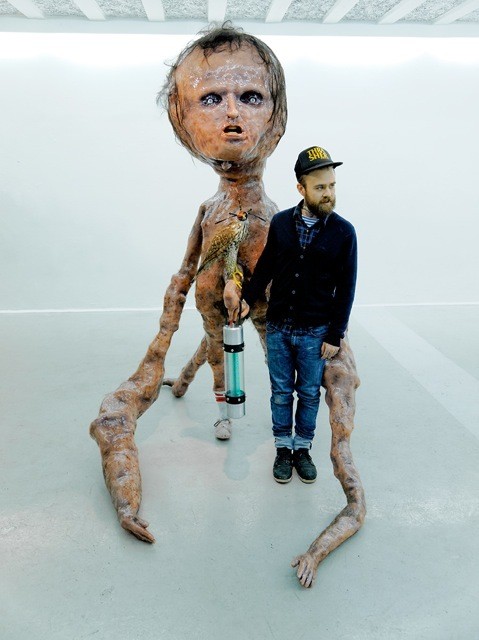
Erik Tidemann with sculpture

Frank Horrigan, Dennis Quaid, Clarence Boddicker
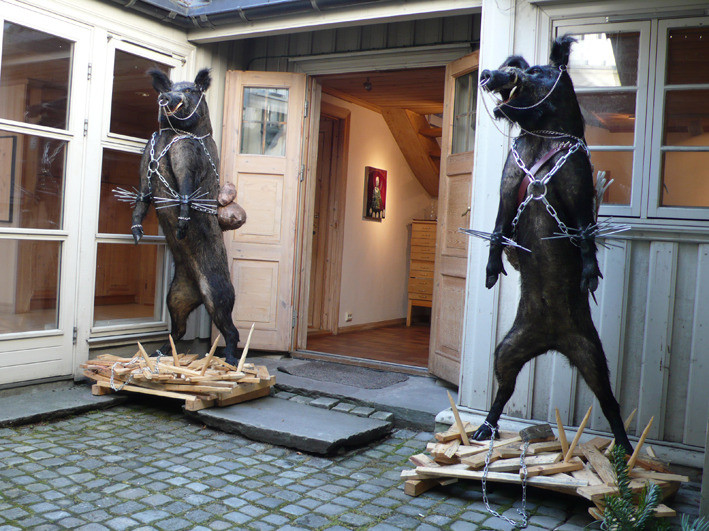
Guardian warhogs Elizabetha and Sophia



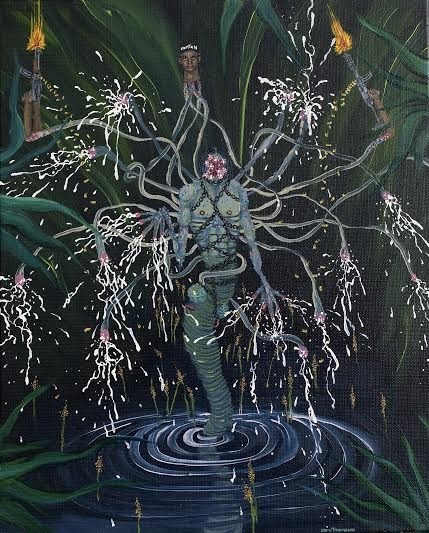
It’s Time to Put Some Niggaz in Check, When You Shoot a Gun, Hot Shells Eject
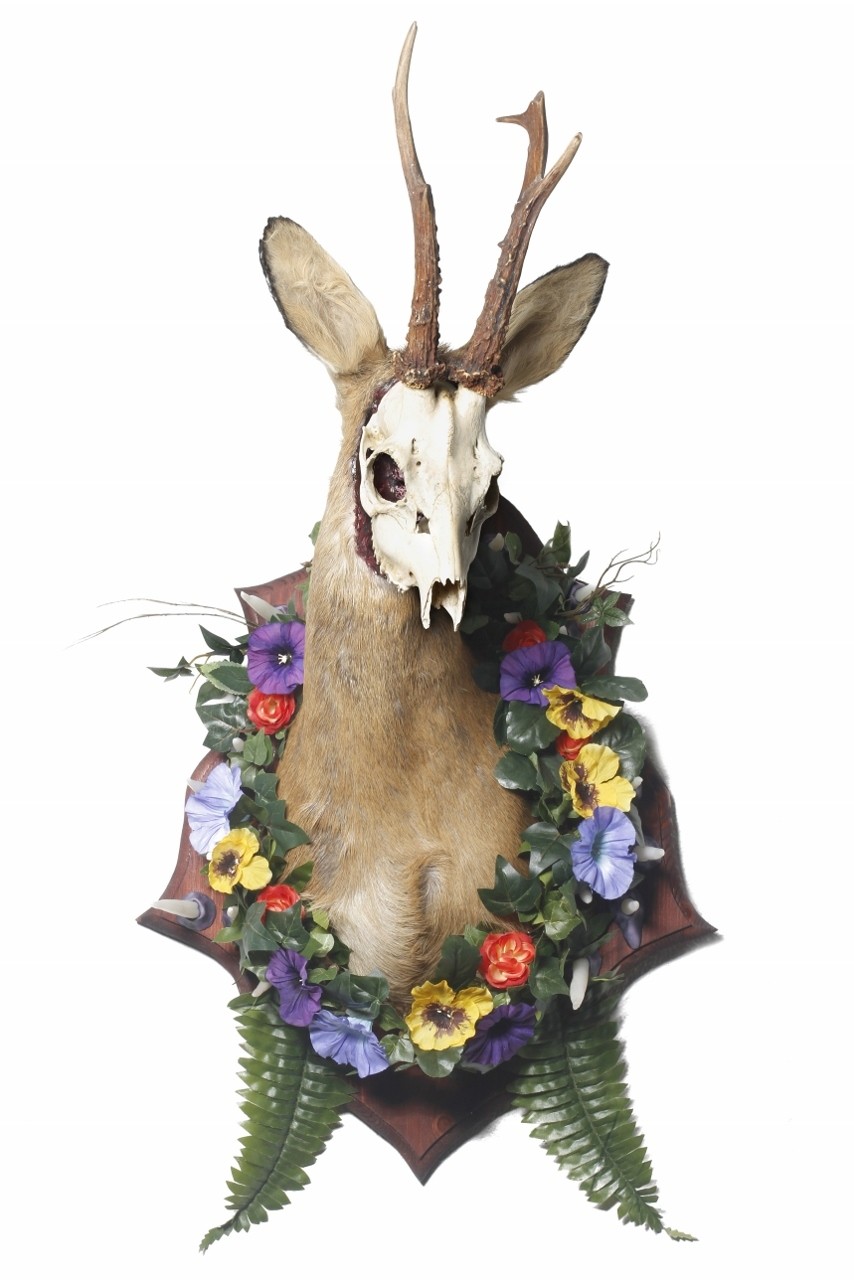
Prince of Darkness
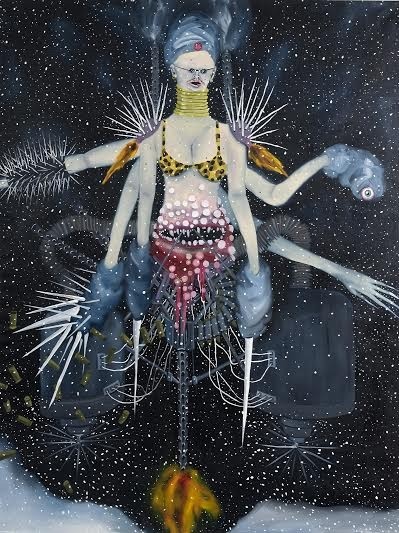
The Cosmic Ray of Doris Day
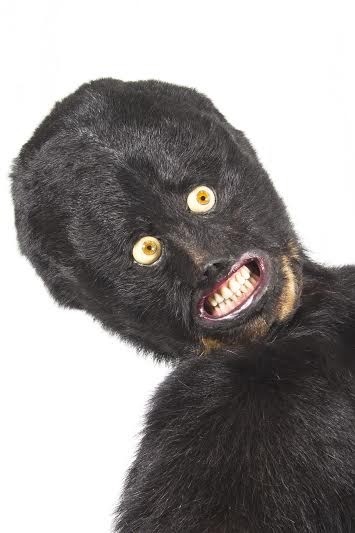
The Unexpected Capture of the Garbage Snatcher
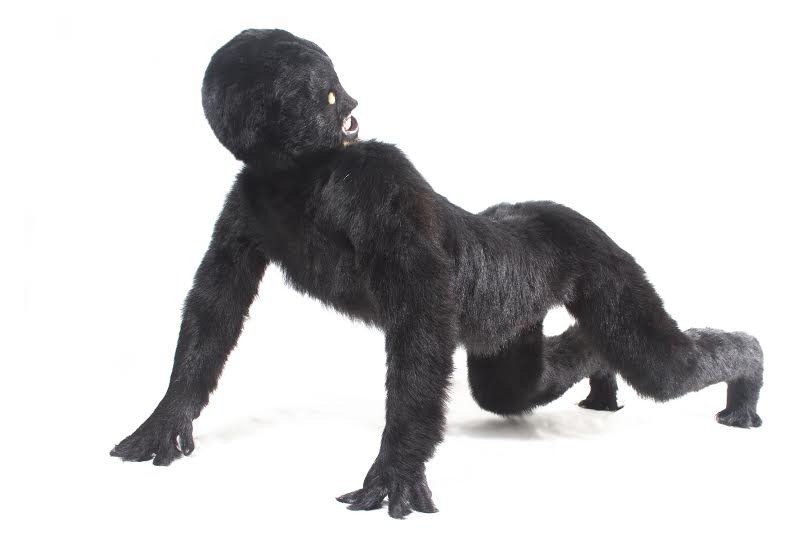
The Unexpected Capture of the Garbage Snatcher
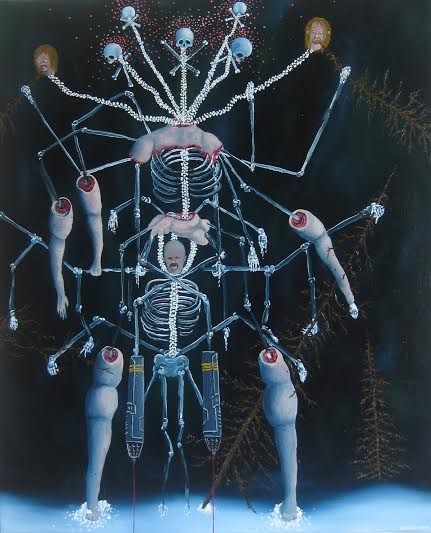
Uranium Cranium